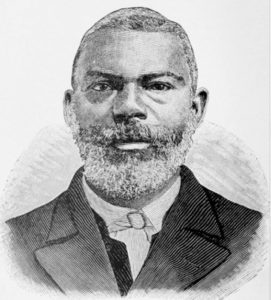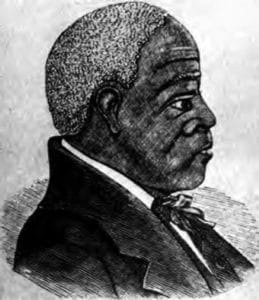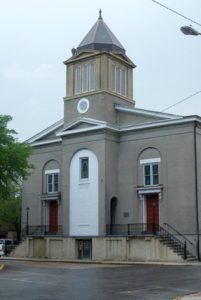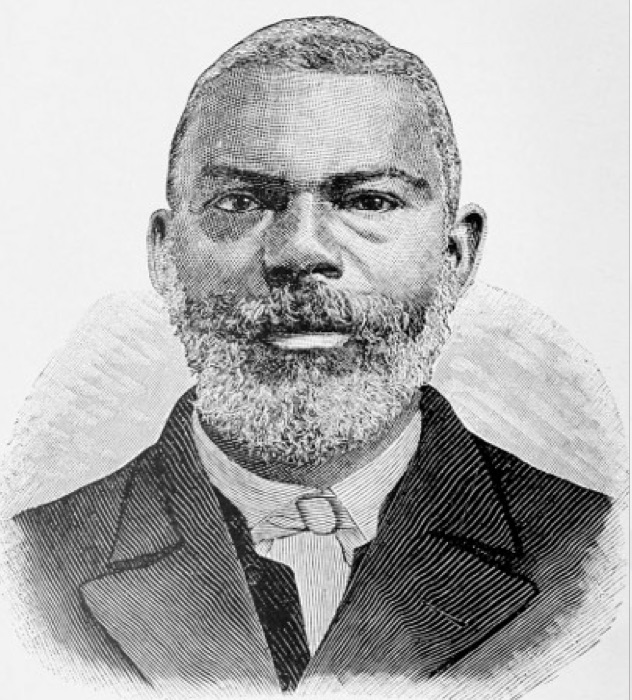
George Liele was born in 1752 and lived a good portion of his life as a slave. And from the fertile ground of the infamous southern plantations to the chills of a prison cell to the beaches of Jamaica, wherever he went, George Liele took good news with him—no matter how challenging the circumstances.
But like every other missionary and church planter who came before Liele and would come after him, he didn’t work alone. Hundreds of men and women stood beside him, working to make Jesus known and plant churches throughout the south. He lived on mission—with others—and the good works God did through him, and them, live on today.
George Liele, David George and Andrew Bryan were a dynamic trio and some of the forgotten heroes of the Christian faith and Baptist denomination in America. They’re an early example of what so many church planters and missionaries want to see—multiplying churches that are meeting the needs of their community while sharing the gospel.
BORN A SLAVE AND BORN AGAIN

After becoming a Christian around 1773 (in his early 20s) Liele was baptized by Baptist minister, Matthew Moore. He was eventually freed by his master Henry Sharp, a Baptist deacon, and was later ordained in 1775. He faithfully preached in slave quarters and on plantations throughout the Savannah area and in parts of South Carolina.
After his former owner’s death in the Revolutionary War, Liele went to Savannah, Georgia (occupied by Britain at the time), where Sharp’s descendants tried to re-enslave him but were ultimately unsuccessful when a British officer came to Liele’s aid.
CHURCH PLANTING IN SOUTH CAROLINA

Liele continued to share the gospel and planted a church among the Black population—slave and free—in Silver Bluff, South Carolina. Eventually, a runaway slave and Christian, David George, became the leader of the Silver Bluff church, which grew under his leadership. Liele preached there on occasion.
Due to persecution, George and many others fled to Savannah and continued to share the gospel alongside Liele there. Eventually, George and his family fled again to Nova Scotia to avoid the potential of being enslaved, and he took the gospel with him and planted and established churches there.
In addition to the Silver Bluff church, Liele also planted churches in Savannah, and among his converts there were Andrew Bryan and his wife, Hannah. Liele and his family eventually fled to Kingston, Jamaica around 1782, and Bryan and his wife, Hannah continued Liele’s ministry work in Savannah.
Perhaps the greatest notable emphasis of Andrew Bryan’s church planting experience was the persecution he and his congregation faced and their longsuffering as they continued to walk with God and make him known. For a time, beatings and burnings and other forms of harsh treatment were commonplace.

Bryan continued preaching and eventually received permission to hold services during the day. In 1788, he was ordained, and in 1794, he built a church structure and established the First African Baptist Church of Savannah (formerly called Bryan Street African Baptist Church), which grew so large they eventually established the Second and Third Baptist Churches.
Charles Jones, a Baptist historical researcher, writes about Bryan:
“The new church and Bryan were provided the authority and protection of the Georgia Baptist Association. In 1793 the church listed a membership of 389, making it among the ten largest Baptist churches in America. Bryan was the much-beloved pastor until his death in 18121.”
The First African Baptist Church of Savannah still stands today and is believed to be the oldest continuous African American congregation in America. It is registered as an historical landmark.
LIFE IN JAMAICA
While Bryan was establishing his church in Savannah, Liele was continuing to share Christ in Kingston, Jamaica. He formed a church on his property, and despite persecution, the church thrived.
In 1791 Liele penned these words, “I have baptized 400 in Jamaica….We have nigh three hundred and fifty members; a few white people among them2.”
Liele was passionate about teaching children (and some of his members), so he opened a free school for slave and free children to learn, which was run by one of his deacons. He continued to serve in Jamaica until his death, and he kept in touch with George and Bryan throughout his life.
THIS IS OUR STORY
Liele, George and Bryan were on mission—together. Their callings inevitably led them to different places, but they always took the gospel with them. Even when persecution followed like an ominous cloud—sometimes from those who named the name of Christ—they kept going.
Regardless of our ethnicities, as Southern Baptists, this is part of our story. And as Christians, this is part of our legacy.
As we build on the kingdom work of those who have come before us, may we emulate their tenacity and courage and their commitment to share Christ and love their neighbor. May we be like Liele, George and Bryan: on mission, together.
Learn more about the contribution of African American Christians on this episode of the We are Send Network podcast
Sources
- 1. A forgotten church that changed history
- 2. Africans in America/Part 2/George Liele
- First Bryan Baptist Church: Our History
- George Liele and Andrew Bryan, Pioneer Negro Baptist Preachers
- Missionaries You Should Know: George Liele
- This Savannah Congregation is Older Than the United States
- 10 Who Changed the World by Danny Akin (B&H Publishing Group, 2013)
Published February 5, 2021
